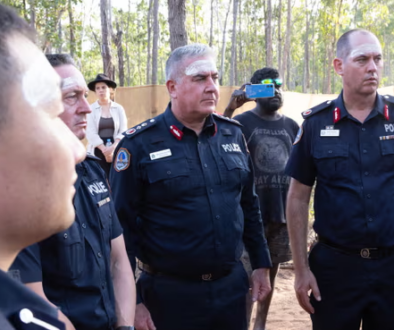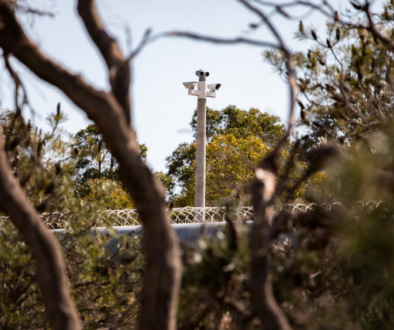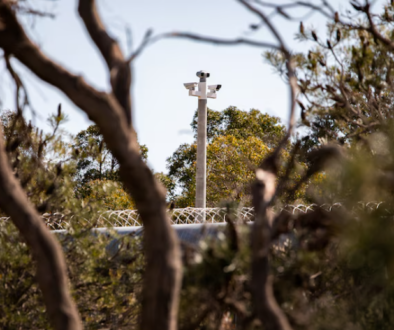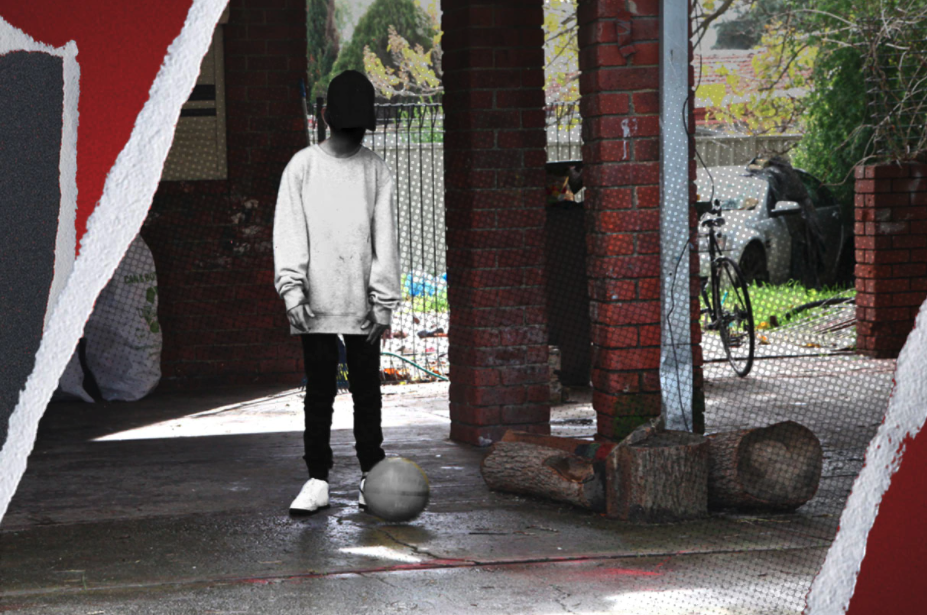
Leroy was incarcerated when he was just 10 years old. This is what his life is like now
Despite pressure to raise the age of criminal responsibility in Australia, a child as young as 10 can still be given a custodial sentence in almost all states and territories. One boy’s experience has seen him strip-searched, assaulted and locked up for hours at a time, and it hasn’t led to reform.
By Aaron Fernandes, originally publiushed on sbs.com.au
Content warning: Contains references that some may find confronting
Leroy (not his real name) spent his first night incarcerated when he was 10 years old after Western Australian police officers found his fingerprints at the scene of a burglary.
He had entered the house with some other children from his neighbourhood and recognises now how short-sighted it was.
“We just wanted money to go buy clothes. To go shopping, go buy a motorbike,” he tells SBS News.
In most places in Australia, a child as young as 10 can be held criminally responsible for their actions and given a custodial sentence, so for Leroy, it meant three and a half weeks at Banksia Hill Detention Centre in Perth’s south.
Leroy is still a minor and that first night remains fresh in his mind.
“[It was] a bit scary. I didn’t like it because there’s too much bigger boys there. And I was probably the littlest one there.”
“I was getting picked on every single day. It wouldn’t stop, the guards weren’t doing nothing … It was frustrating. I didn’t have family in there. No one to talk to. I was alone.”
“I was probably the littlest one there… I was getting picked on everyday.”
– Leroy
In the years since, he has lost count of how many times he has returned to Banksia Hill. He guesses there have been more than 30 different occasions; sometimes staying for days, other times for several weeks.
Violence and solitude
Those aged 10 to 17 are sent to Banksia Hill, WA’s only custodial facility for children, from all over the state. In many cases, it means being thousands of kilometres away from family and community.
Data from 2020 shows Aboriginal children accounted for 74 per cent of those incarcerated.
Leroy, who is Aboriginal, says his experiences of Banksia Hill have been confronting and violent. He says he has been strip-searched multiple times, assaulted by other detainees, sworn at by guards and placed in isolation.
He also witnessed another Aboriginal boy have his arm broken by a guard, he says.
“They rough handle kids, they slam on their face. One of the boys got his arm broken from a guard; I seen it happen with my own eyes.”
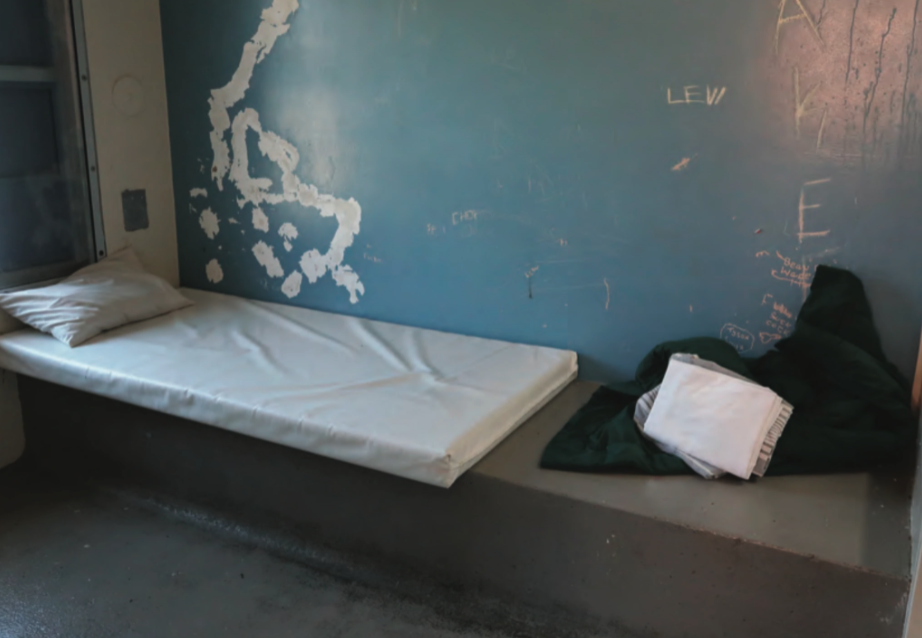
WA’s Department of Justice declined an interview request but a spokesperson said in a statement it had “no reports or evidence” of such an injury and recommended Leroy lodge a complaint with the department or police.
Leroy also says he has been bullied and assaulted by other children at Banksia Hill. One approached him from behind and punched him in the head.
But the hardest part of life there, he says, is the prolonged stretches each detainee spends in lockdown.
“Wednesdays, they lock you down for five hours, from 12 o’clock to five o’clock, and then you don’t even get lunch between those hours. It’s hard.”
“I don’t like it, because when I’m in there for five hours, I keep looking at the walls … I’m used to being by myself for an hour or something, but not that long. It does my head in, I start stressing out. I don’t know what to do.”
“I keep looking at the walls … It does my head in, I start stressing out. I don’t know what to do.”
– Leroy
WA’s prison watchdog, the Office of the Inspector of Custodial Services (OICS), completed an inspection of Banksia Hill in September 2020 and released its report earlier this year. It found detainees on average spent 13 hours or more a day in their cells, with an additional lockdown each week while staff undergo training that typically lasts up to five hours.
The lockdowns have been used at Banksia Hill since before 2018, despite earlier OICS reports condemning the practice.
The Department of Justice said it provided a response to the recommendations this year and is reviewing its practices “including the locking of young people in cells during training”.
‘Powder keg’
Clinical psychologist Dr Tracy Westerman is a Nyamal woman from the Pilbara region and recognised around the world as a leader in Aboriginal mental health, cultural competency and suicide prevention.
She says 80 per cent of incarcerated children have experienced previous trauma and keeping them in isolation significantly increases their risk of self-harm.
“It just really, really, greatly concerns me that we’re treating children in that way. It’s inhumane.”
“We know that isolation is one of the strongest predictors of suicide. Isolation is one of the strongest predictors of depression; the more isolated you get, the more depressed you get.”
“Most people can relate to that at the moment because of the [COVID-19] lockdowns we’ve had … When you put someone in isolation, and they have memories and intrusive thoughts around trauma, it’s a powder keg of something terrible happening to that child.”
“It greatly concerns me that we’re treating children in that way. It’s inhumane.”
– Dr Tracy Westerman
Currently, Banksia Hill has no dedicated crisis care unit for children at risk of self-harm. Instead, acutely mentally unwell detainees are sent “down the back”, as Leroy says it is known, to its Intensive Support Unit, an area also used to detain those who are violent or disruptive.
“You’re not even allowed to sing. If you do, they’ll send you down the back,” Leroy says.
“If you don’t do your chores, they’ll send you down the back … it’s child abuse.”
During its 2018 inspection, OICS described the four observation cells in the Intensive Support Unit as “stark and confining”. In 2020, it said, the suitability of the facility had declined even further.
“The infrastructure had degraded since our earlier reports and the cells were now in much poorer condition. The windows were so scratched that it was difficult to see through them, and there was extensive graffiti on the walls. There was no indoor common area so young people spent most of their time in [their] cell. The only outdoor space was a caged concrete yard,” the report said.
OICS noted that although the Banksia Hill management had developed proposals to improve the infrastructure, the Department of Justice had been unable to provide funding and there had been no change.
The department did not respond to questions about the number of self-harm attempts or incidents requiring hospitalisation at Banksia Hill. In its response to the OICS report, it said it is reviewing infrastructure plans and the current Intensive Support Unit and Crisis Care Unit will be considered for future investment.
Life of crime
When he’s not incarcerated, Leroy lives with a family member in a disadvantaged area with a high crime rate.
“It’s just hard, you can’t stop doing crime because it’s like you’re addicted to it and you don’t know what to do in the community to keep you out of crime,” he says.
“There’s no programs or nothing to keep you out of crime. I just don’t know what to do in life.”
Leroy says he desperately wants to avoid returning to Banksia Hill, particularly to its Intensive Support Unit.
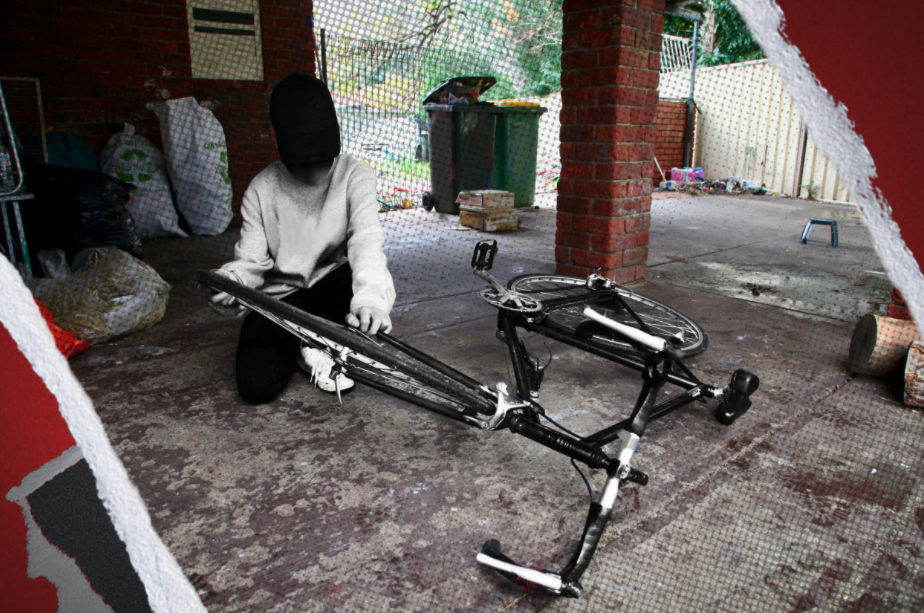
“The boys in there hate me, they want to bash me, there’s no reason to go back. I’d rather sit at home,” he says.
“They treat me like a dog in there.”
“I want to be a mechanic. I want to fix up motorbikes and cars … I just want to get a job as soon as possible.”
There’s no programs to keep you out of crime. I just don’t know what to do in life.
– Leroy
But the incarceration has so far had little impact on his reoffending.
It comes as no surprise to Dr Westerman, who says she is yet to see a child “psychologically, mentally, and socially” better off after spending time in detention.
“The evidence actually supports the fact that the early criminalisation of children, the normalisation of criminality, predicts future criminality. That’s irrefutable, in terms of the evidence.”
“The minute we normalise it at such a young age, then they just don’t fear prison anymore.”
‘Raise the age’
Across Australia, most states and territories have so far resisted calls from a coalition of legal, medical and social justice organisations, to raise the age of criminal responsibility from 10 to 14.
The federal government has remained largely silent on the issue, insisting it is a decision for the individual jurisdictions. But talks among the respective attorneys general have stalled and no consensus has emerged, with only the Australian Capital Territory so far committing to change its laws.
WA’s Attorney General John Quigley declined to be interviewed and said in a statement that discussions were “ongoing”.
“Any changes would require resources and careful consideration to ensure that the small number of children who exhibit serious offending at a young age can be properly managed outside the criminal justice system,” he said.
“The WA Government already diverts young people away from the criminal justice system, where reasonable.”
At Banksia Hill, the average daily population declined from 145 in 2017 to 105 in 2020. The number of girls in the facility is growing, up from six per cent in 2017 to 13 per cent in 2020.
A 2018 study by the Telethon Kids Institute found severe neurodevelopmental impairment among those at Banksia Hill, with 89 per cent having at least one form of severe neurodevelopmental impairment and 36 per cent having fetal alcohol spectrum disorder.
Dr Westerman says 10-year-olds are not sufficiently developed to understand the consequences of their actions in the same way as adults and incarceration actually impairs that ability as they grow older.
“The way we develop into psychologically robust human beings that contribute to society is from the love and care provided by the people around us being there in a predictable way.”
“If you imprison a kid at that age and you take the parenting away, essentially they are learning how to determine the difference between right or wrong with no external supports or measures to help them get there.
“Children will learn to avoid punishment, to tell better lies, avoid law enforcement. Worse than that … if you put kids in prison with other kids who have trauma, reactivity and impulsiveness becomes normalised, which leads to further trauma. And the likelihood of offending behaviours being ingrained becomes increasingly likely.”
Speaking out
Former Banksia Hill detainees are preparing to sue the WA Government over alleged mistreatment and are seeking compensation through Levitt Robinson Solicitors.
For the past year, advocates have held community meetings in Perth and regional centres, calling on former detainees to come forward.
Former director of the National Suicide Prevention and Trauma Recovery Project Gerry Georgatos, who is assisting with the class action, says more than 200 people have so far shared their stories. The Department of Justice did not comment on whether it has sought its own legal advice.
Based on figures from the Department of Communities, the WA Government has spent more than $200,000 incarcerating Leroy at Banksia Hill. He has missed months of schooling and says he has not achieved any meaningful training or skills while inside, something Mr Georgatos says is typical of former detainees.
“They come out with no transferable skills … There’s no level of equivalency to education on the outside, especially at the literacy level for those in need.”
“There’s also a missed opportunity for psychosocial counselling for addressing trauma, especially when they’ve got no other supports to depend on outside, with the poverty and disadvantage that many of their families face.”
“They come out, at best, in the same condition that they came, but more often than not, they go out hardened, worse than when they went in.”
“More often than not, they go out worse than when they went in.”
– Gerry Georgatos
In a statement released in response to the OICS report, WA Corrective Services Commissioner Mike Reynolds said Banksia Hill offers a range of programs and services to address detainees’ health and emotional wellbeing, with the aim of reducing recidivism rates.
“Despite a series of recent incidents, Banksia Hill has become a more settled place in recent years under strong and stable leadership,” he said.
“This has allowed staff and service providers to focus on young people’s needs and help put them on pathways to better outcomes when they are released.”
“The variety of programs at Banksia Hill allow detainees to develop new skills, build self-confidence and find role models to inspire them.”
Mr Georgatos delivered an eight-week program at Banksia Hill last year when other support services withdrew from the facility due to COVID-19.
“It’s nothing more than a holding pen,” he says. “The Intensive Support Unit is a cage within a cage.”
“One child said he can stretch out his arms and touch both walls; that’s how small that cell is. It’s no place for children”.

Leroy was incarcerated when he was just 10 years old. This is what his life is like now
Despite pressure to raise the age of criminal responsibility in Australia, a child as young as 10 can still be given a custodial sentence in almost all states and territories. One boy’s experience has seen him strip-searched, assaulted and locked up for hours at a time, and it hasn’t led to reform.
By Aaron Fernandes, originally publiushed on sbs.com.au
Content warning: Contains references that some may find confronting
Leroy (not his real name) spent his first night incarcerated when he was 10 years old after Western Australian police officers found his fingerprints at the scene of a burglary.
He had entered the house with some other children from his neighbourhood and recognises now how short-sighted it was.
“We just wanted money to go buy clothes. To go shopping, go buy a motorbike,” he tells SBS News.
In most places in Australia, a child as young as 10 can be held criminally responsible for their actions and given a custodial sentence, so for Leroy, it meant three and a half weeks at Banksia Hill Detention Centre in Perth’s south.
Leroy is still a minor and that first night remains fresh in his mind.
“[It was] a bit scary. I didn’t like it because there’s too much bigger boys there. And I was probably the littlest one there.”
“I was getting picked on every single day. It wouldn’t stop, the guards weren’t doing nothing … It was frustrating. I didn’t have family in there. No one to talk to. I was alone.”
“I was probably the littlest one there… I was getting picked on everyday.”
– Leroy
In the years since, he has lost count of how many times he has returned to Banksia Hill. He guesses there have been more than 30 different occasions; sometimes staying for days, other times for several weeks.
Violence and solitude
Those aged 10 to 17 are sent to Banksia Hill, WA’s only custodial facility for children, from all over the state. In many cases, it means being thousands of kilometres away from family and community.
Data from 2020 shows Aboriginal children accounted for 74 per cent of those incarcerated.
Leroy, who is Aboriginal, says his experiences of Banksia Hill have been confronting and violent. He says he has been strip-searched multiple times, assaulted by other detainees, sworn at by guards and placed in isolation.
He also witnessed another Aboriginal boy have his arm broken by a guard, he says.
“They rough handle kids, they slam on their face. One of the boys got his arm broken from a guard; I seen it happen with my own eyes.”

WA’s Department of Justice declined an interview request but a spokesperson said in a statement it had “no reports or evidence” of such an injury and recommended Leroy lodge a complaint with the department or police.
Leroy also says he has been bullied and assaulted by other children at Banksia Hill. One approached him from behind and punched him in the head.
But the hardest part of life there, he says, is the prolonged stretches each detainee spends in lockdown.
“Wednesdays, they lock you down for five hours, from 12 o’clock to five o’clock, and then you don’t even get lunch between those hours. It’s hard.”
“I don’t like it, because when I’m in there for five hours, I keep looking at the walls … I’m used to being by myself for an hour or something, but not that long. It does my head in, I start stressing out. I don’t know what to do.”
“I keep looking at the walls … It does my head in, I start stressing out. I don’t know what to do.”
– Leroy
WA’s prison watchdog, the Office of the Inspector of Custodial Services (OICS), completed an inspection of Banksia Hill in September 2020 and released its report earlier this year. It found detainees on average spent 13 hours or more a day in their cells, with an additional lockdown each week while staff undergo training that typically lasts up to five hours.
The lockdowns have been used at Banksia Hill since before 2018, despite earlier OICS reports condemning the practice.
The Department of Justice said it provided a response to the recommendations this year and is reviewing its practices “including the locking of young people in cells during training”.
‘Powder keg’
Clinical psychologist Dr Tracy Westerman is a Nyamal woman from the Pilbara region and recognised around the world as a leader in Aboriginal mental health, cultural competency and suicide prevention.
She says 80 per cent of incarcerated children have experienced previous trauma and keeping them in isolation significantly increases their risk of self-harm.
“It just really, really, greatly concerns me that we’re treating children in that way. It’s inhumane.”
“We know that isolation is one of the strongest predictors of suicide. Isolation is one of the strongest predictors of depression; the more isolated you get, the more depressed you get.”
“Most people can relate to that at the moment because of the [COVID-19] lockdowns we’ve had … When you put someone in isolation, and they have memories and intrusive thoughts around trauma, it’s a powder keg of something terrible happening to that child.”
“It greatly concerns me that we’re treating children in that way. It’s inhumane.”
– Dr Tracy Westerman
Currently, Banksia Hill has no dedicated crisis care unit for children at risk of self-harm. Instead, acutely mentally unwell detainees are sent “down the back”, as Leroy says it is known, to its Intensive Support Unit, an area also used to detain those who are violent or disruptive.
“You’re not even allowed to sing. If you do, they’ll send you down the back,” Leroy says.
“If you don’t do your chores, they’ll send you down the back … it’s child abuse.”
During its 2018 inspection, OICS described the four observation cells in the Intensive Support Unit as “stark and confining”. In 2020, it said, the suitability of the facility had declined even further.
“The infrastructure had degraded since our earlier reports and the cells were now in much poorer condition. The windows were so scratched that it was difficult to see through them, and there was extensive graffiti on the walls. There was no indoor common area so young people spent most of their time in [their] cell. The only outdoor space was a caged concrete yard,” the report said.
OICS noted that although the Banksia Hill management had developed proposals to improve the infrastructure, the Department of Justice had been unable to provide funding and there had been no change.
The department did not respond to questions about the number of self-harm attempts or incidents requiring hospitalisation at Banksia Hill. In its response to the OICS report, it said it is reviewing infrastructure plans and the current Intensive Support Unit and Crisis Care Unit will be considered for future investment.
Life of crime
When he’s not incarcerated, Leroy lives with a family member in a disadvantaged area with a high crime rate.
“It’s just hard, you can’t stop doing crime because it’s like you’re addicted to it and you don’t know what to do in the community to keep you out of crime,” he says.
“There’s no programs or nothing to keep you out of crime. I just don’t know what to do in life.”
Leroy says he desperately wants to avoid returning to Banksia Hill, particularly to its Intensive Support Unit.

“The boys in there hate me, they want to bash me, there’s no reason to go back. I’d rather sit at home,” he says.
“They treat me like a dog in there.”
“I want to be a mechanic. I want to fix up motorbikes and cars … I just want to get a job as soon as possible.”
There’s no programs to keep you out of crime. I just don’t know what to do in life.
– Leroy
But the incarceration has so far had little impact on his reoffending.
It comes as no surprise to Dr Westerman, who says she is yet to see a child “psychologically, mentally, and socially” better off after spending time in detention.
“The evidence actually supports the fact that the early criminalisation of children, the normalisation of criminality, predicts future criminality. That’s irrefutable, in terms of the evidence.”
“The minute we normalise it at such a young age, then they just don’t fear prison anymore.”
‘Raise the age’
Across Australia, most states and territories have so far resisted calls from a coalition of legal, medical and social justice organisations, to raise the age of criminal responsibility from 10 to 14.
The federal government has remained largely silent on the issue, insisting it is a decision for the individual jurisdictions. But talks among the respective attorneys general have stalled and no consensus has emerged, with only the Australian Capital Territory so far committing to change its laws.
WA’s Attorney General John Quigley declined to be interviewed and said in a statement that discussions were “ongoing”.
“Any changes would require resources and careful consideration to ensure that the small number of children who exhibit serious offending at a young age can be properly managed outside the criminal justice system,” he said.
“The WA Government already diverts young people away from the criminal justice system, where reasonable.”
At Banksia Hill, the average daily population declined from 145 in 2017 to 105 in 2020. The number of girls in the facility is growing, up from six per cent in 2017 to 13 per cent in 2020.
A 2018 study by the Telethon Kids Institute found severe neurodevelopmental impairment among those at Banksia Hill, with 89 per cent having at least one form of severe neurodevelopmental impairment and 36 per cent having fetal alcohol spectrum disorder.
Dr Westerman says 10-year-olds are not sufficiently developed to understand the consequences of their actions in the same way as adults and incarceration actually impairs that ability as they grow older.
“The way we develop into psychologically robust human beings that contribute to society is from the love and care provided by the people around us being there in a predictable way.”
“If you imprison a kid at that age and you take the parenting away, essentially they are learning how to determine the difference between right or wrong with no external supports or measures to help them get there.
“Children will learn to avoid punishment, to tell better lies, avoid law enforcement. Worse than that … if you put kids in prison with other kids who have trauma, reactivity and impulsiveness becomes normalised, which leads to further trauma. And the likelihood of offending behaviours being ingrained becomes increasingly likely.”
Speaking out
Former Banksia Hill detainees are preparing to sue the WA Government over alleged mistreatment and are seeking compensation through Levitt Robinson Solicitors.
For the past year, advocates have held community meetings in Perth and regional centres, calling on former detainees to come forward.
Former director of the National Suicide Prevention and Trauma Recovery Project Gerry Georgatos, who is assisting with the class action, says more than 200 people have so far shared their stories. The Department of Justice did not comment on whether it has sought its own legal advice.
Based on figures from the Department of Communities, the WA Government has spent more than $200,000 incarcerating Leroy at Banksia Hill. He has missed months of schooling and says he has not achieved any meaningful training or skills while inside, something Mr Georgatos says is typical of former detainees.
“They come out with no transferable skills … There’s no level of equivalency to education on the outside, especially at the literacy level for those in need.”
“There’s also a missed opportunity for psychosocial counselling for addressing trauma, especially when they’ve got no other supports to depend on outside, with the poverty and disadvantage that many of their families face.”
“They come out, at best, in the same condition that they came, but more often than not, they go out hardened, worse than when they went in.”
“More often than not, they go out worse than when they went in.”
– Gerry Georgatos
In a statement released in response to the OICS report, WA Corrective Services Commissioner Mike Reynolds said Banksia Hill offers a range of programs and services to address detainees’ health and emotional wellbeing, with the aim of reducing recidivism rates.
“Despite a series of recent incidents, Banksia Hill has become a more settled place in recent years under strong and stable leadership,” he said.
“This has allowed staff and service providers to focus on young people’s needs and help put them on pathways to better outcomes when they are released.”
“The variety of programs at Banksia Hill allow detainees to develop new skills, build self-confidence and find role models to inspire them.”
Mr Georgatos delivered an eight-week program at Banksia Hill last year when other support services withdrew from the facility due to COVID-19.
“It’s nothing more than a holding pen,” he says. “The Intensive Support Unit is a cage within a cage.”
“One child said he can stretch out his arms and touch both walls; that’s how small that cell is. It’s no place for children”.

